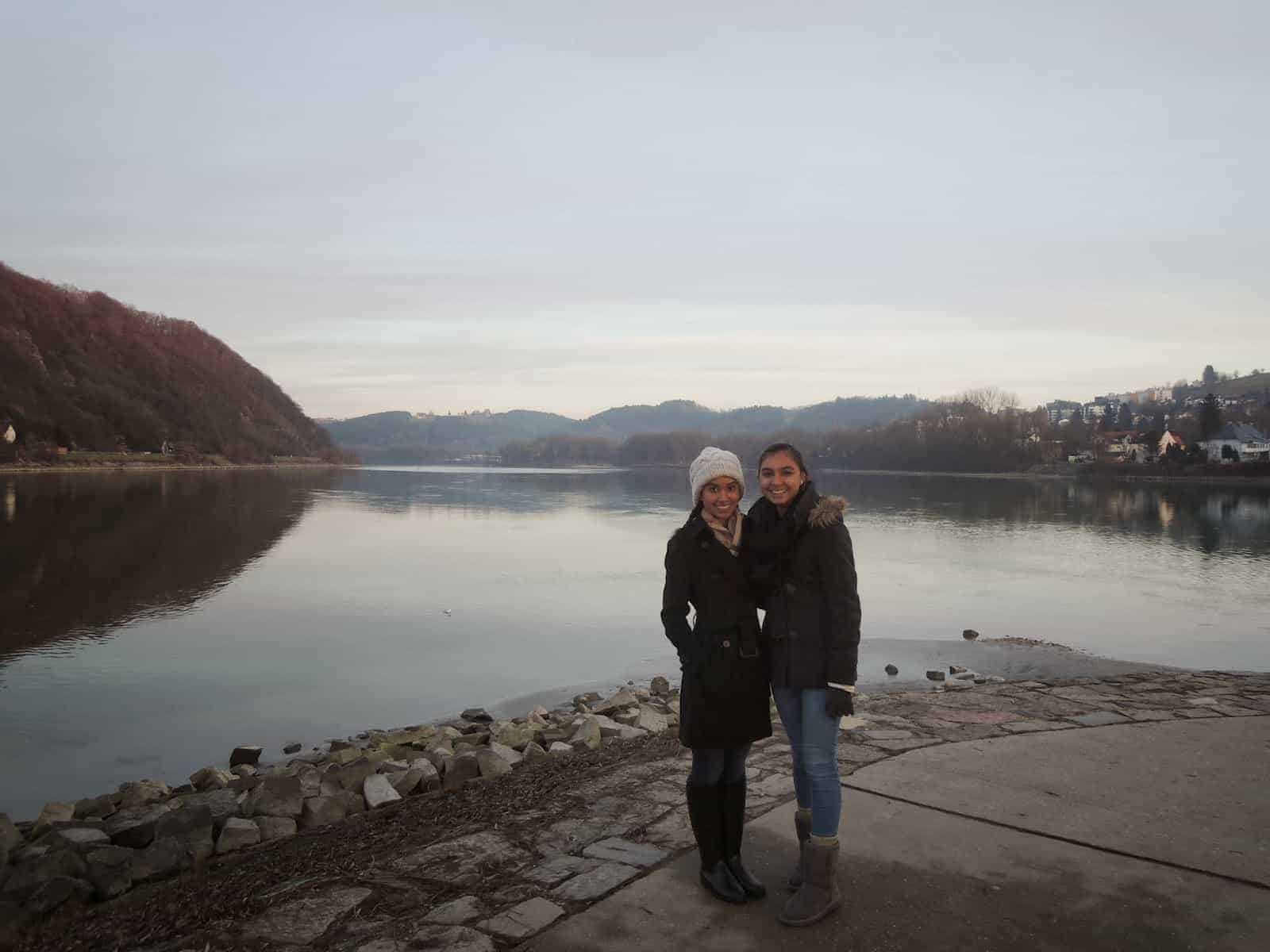Today we begin our 7 day Danube River Cruise! This is our Christmas family vacation!

The girls wanted to travel somewhere cold and I like vacations where we have the opportunity to visit many different places. Poor Leon didn’t get much of a say this year! A river cruise sounded like the perfect trip!
After a lovely 2 hour train ride from Munich we arrived in Passau, Germany where we boarded the boat. A week from now we disembark in Budapest, Hungary, along the way visiting 6 different cities in 4 countries: Germany, Austria, Slovakia, and Hungary! We will also spend a few extra days in Budapest!
As always I like to do a bit of research prior to our trips. The Danube River is the second longest river in Europe after the Volga. It rises in the Black Forest mountains of western Germany and flows for some 1,770 miles (2,850 km) to its mouth on the Black Sea. We will be traveling along about 500 miles of it. Along its course, it passes through nine countries: Germany, Austria, Slovakia, Hungary, Croatia, Serbia, Bulgaria, Romania, and Ukraine.
The following is an excerpt about The Danube River from the book sent to each of us by The Viking River Cruise company (www.vikingrivercruises.com) prior to our trip!
“The Danube’s history as a trade route dates to well before the expansion of the Roman Empire. Early tribes used it to transport all kinds of goods especially salt and furs. The earliest water vehicles were simple rafts, which drifted downstream and were poled or rowed upstream. …..In the seventh century BC the Greeks sailed up the Danube from the Black Sea as far as The Iron Gate, where the rapids prevented them from progressing further. When the Roman Empire expanded into Europe after about 30 BC they relied on the Danube as a principle method to move inland. ….With the crumbling of the Roman Empire (around 476 AD) the Danube continued its importance as the only reliable trade corridor between East & West. ”
“The free back & forth movement of Danube River trade was disrupted but not halted when the Turks conquered Constantinople (1453)…. reaching the gates of Vienna in 1529. For the next 300 years the Danube region was subject to constant wars and disputes with access to the Danube central to the conflicts.”
“Throughout all these centuries, there were virtually no technical developments in shipping. Ships could only move forward against the current if they were towed. This was done from the banks by teams of men. Later the work was done by horses and at the Iron Gate, steam locomotives. ”
“In 1812, Vienna witnessed a revolutionary innovation-the launching of the Danube’s first steam- driven ship. Thus began the era of power shipping allowing vessels to move upstream under their own power. ”
“The First Danube Steamship Company was founded in 1829. … Regular steamship traffic between Vienna and Budapest commenced in 1830. A special technique used by steamships was chain shipping….By means of steam-driven winches, ships worked their way along a chain, which had been laid on the bed of the river. The first length of chain was laid from Bratislava to Vienna….Downstream ships sailed normally, without using the chain. The first steam ships were paddle steamers with 2 or 3 engines. Soon tugs, which could tow an entire line of barges, came into fashion. This method survived on the Danube for a very long time and is still occasionally used today.”
So that is the end of today’s lesson! I hope you learned a little bit about the history of the Danube River! Over the next few days I will report on the beautiful landscape we witness and the various towns we visit!
Merry Christmas!


Leave a Reply